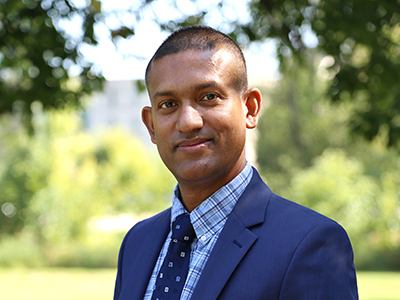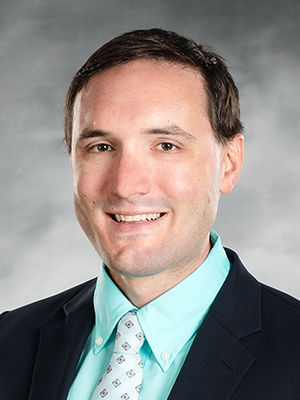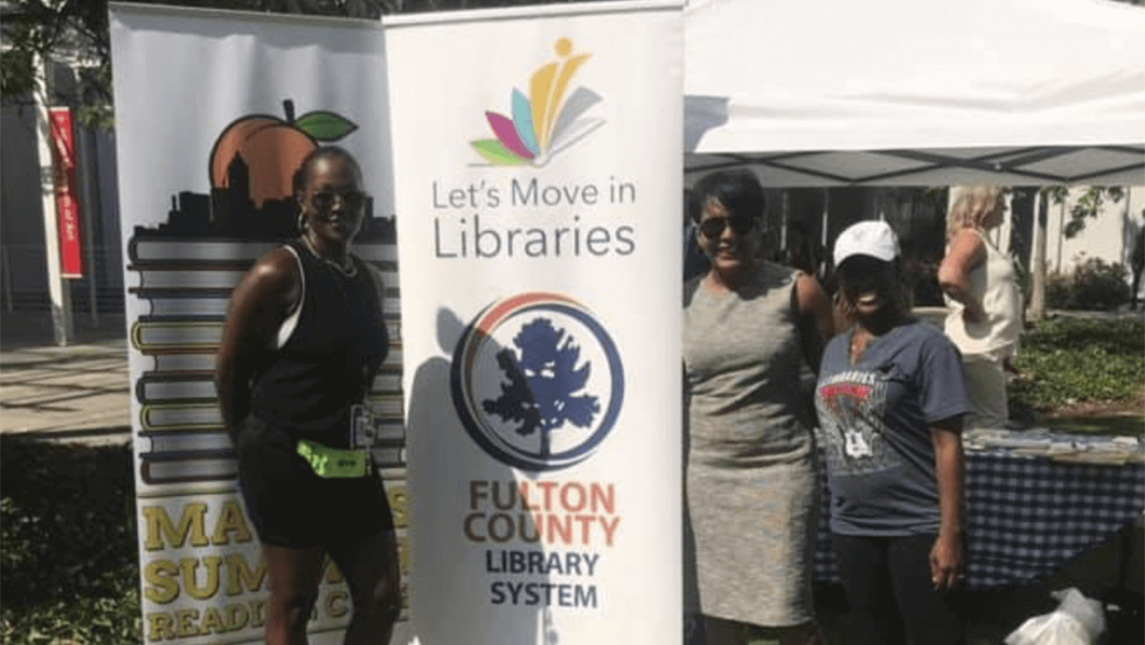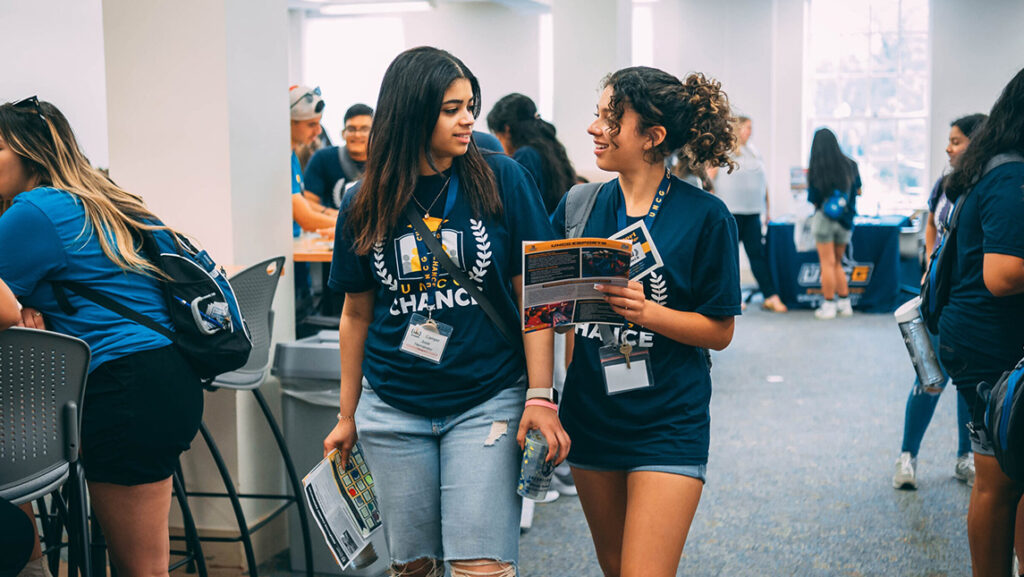UNCG School of Education’s Impact through Innovation Program empowers faculty to transform ideas into reality.
An 8 year-old girl maneuvers a plastic knight that is almost as tall as she is. Scooting it diagonally across a giant black and white checkerboard, she completes her chess move with a smile. In another room, an instructor leads a yoga class for seniors. On the event board, a poster informs visitors that a cooking class will be held on an upcoming weekend.
All these projects were inspired by the Let’s Move in Libraries initiative that connects librarians across the country – and the world – to share ideas and initiatives for healthy eating and active living. The program is one of many successful ideas that started in UNC Greensboro’s School of Education’s Impact through Innovation (ITI) program and was given the initial nurturing, guidance, and seed funding to go from idea to fruition.
ITI in Action
A solution isn’t useful if no one is interested in it. This is the tenet of the ITI program that Director Scott Young encourages all of its participants to work through.
“I sit down with faculty and ask, ‘Whose lives do you wanna touch? What impact do you want your work to make?’” Young says. “We want to help faculty take their knowledge and get it outside the University into something that actually makes a difference in people’s lives. And that is what folks get excited about.”
ITI is a one-of-a-kind program that offers tailored consulting to faculty as they re-imagine their research and optimize it for a broader social impact.
“The research is already there,” Young says. “We want to encourage our faculty and students to think about using that research to create tangible solutions for the people who will use it. Our innovation toolkit is designed to guide them through that thought process. The solution won’t work if those it’s intended for aren’t interested in it.”
ITI utilizes Kickbox, an innovation toolkit originally developed by Adobe as an internal tool to help drive innovation when thinking about problems. Young modified Kickbox and tailored it for an educational context that would facilitate faculty and students thinking through new ideas.
“We give people a little bit of guidance, let them look for real word problems that they see and want to solve,” Young says.
Learn Through Play
One of the most recent real-world problems to come through ITI: helping middle school girls overcome the societal stereotype that they don’t belong in science, technology, engineering, and math (STEM).
A survey by Junior Achievement USA demonstrated that only 9% of girls between the ages of 13 and 17 are interested in STEM careers. Currently women account for only 34% of the workforce in STEM. This problem is particularly troubling to Hamid Nadir, Assistant Professor of library and Information Science.
“I have two young daughters, ages 9 and 12, I want to engage them in fun activities that are also a learning experience,” Nadir says. “During my PhD program I took a learning science course. It was grown-ups playing with toys, which sounds really corny, but it was fun. We played with, dissected, and made new contraptions out of toys. I would bring the toys home to play with my daughters, and they loved it and kept asking me to bring home new toys to take apart. It made me want programs for them that create learning opportunities through games.”

Not finding any local programs that offer this type of fun, hands-on, learning for kids around that same age, Nadir was inspired to create his own curriculum. Through ITI, he is developing the curriculum for middle school aged children.
“Middle school age children need some guidance. They are at that stage where they’re trying to find their identity and we need them to see themselves in STEM,” Nadir explains. “One idea I’m working on is if we can include a mentor program that includes high school girls in STEM so they can see older girls who like physics, experiments, chemistry, and playing with science.”
At this stage he is working on the physical tangible projects that the students can build – one per week of the six-to-eight week curriculum.
“ITI will hopefully give me a springboard to work with other mentors to flush out some of these ideas and refine them,” Nadir says. Once he hones in on the idea, he will be prepared to apply for a grant from the National Science Foundation.
“My goal is to create something that is hands-on, keeps the students actively engaged and they are motivated to learn something,” Nadir says. “This type of learning should be fun. That’s my primary objective with this play-based learning project.”
Let’s Move in Libraries Has Lasting Impact
Let’s Move in Libraries, is now in its seventh year and has scaled from a local library program to one that has a national and international reach.
In 2016, Professor Noah Lenstra was interested in how the federal library agency – the U.S. Institute of Museum & Library Services – could build on First Lady Michelle Obama’s “Let’s Move” initiative to bring equitable access to healthy eating and exercise into library programming.
“At the time, within libraries, there was a big interest in yoga, yoga story time, and movement and music,” Lenstra explains. “My idea was to close the loop and make public libraries a catalyst for community health.”
He formed an advisory board focused on creating library programming around physical activity, food and nutrition. He created a website and facebook community group so that librarians could exchange ideas. ITI was instrumental in making the website functional.

“I received a mini grant of $5,000 through ITI in 2018 that made a big difference. I hired a web designer to create a public facing website for the initiative,” says Lenstra. “Even more important than that was the opportunity to have the space to talk through the idea of Let’s Move Libraries, how to do that, how to use my research to really make an impact with public librarians.”
His research became the “Let’s Move! Fitness Programming in Public Libraries” published in Public Library Quarterly in 2018. In 2020, Lenstra received a grant from the Institute of Museum and Library Services to further his research on community health and wellness in small libraries. That same year, Lenstra published “Healthy Living at the Library,”a step-by-step guide on how to start, run, and sustain a healthy living program.
The initiative now has a robust community that includes a monthly Zoom call connecting librarians and a newsletter that keeps everyone engaged with new ideas.
“The next major initiative we’re working towards right now is creating a sustainable platform for peer-to-peer learning exchange,” says Lenstra. “We’re hoping to keep building the momentum and keep our librarians engaged.”
ITI Inspires Other Schools at UNCG
The innovation initiative out of the School of Education has inspired the School of Health and Human Services to consider creating its own version of ITI. Young and David Wyrick of Launch UNCG are in talks to possibly expand or combine the programs.
“We want to remove barriers for faculty and students who have great ideas, but may not know how to start a business,” Young says. “There’s more to come as we talk to more folks about what resources we need to bring this vision to a reality.”
In the meantime, ITI is willing to help guide faculty and students beyond academia as they develop ideas that will support communities in need by putting their research into practice.

Discover Impact Through Innovation



